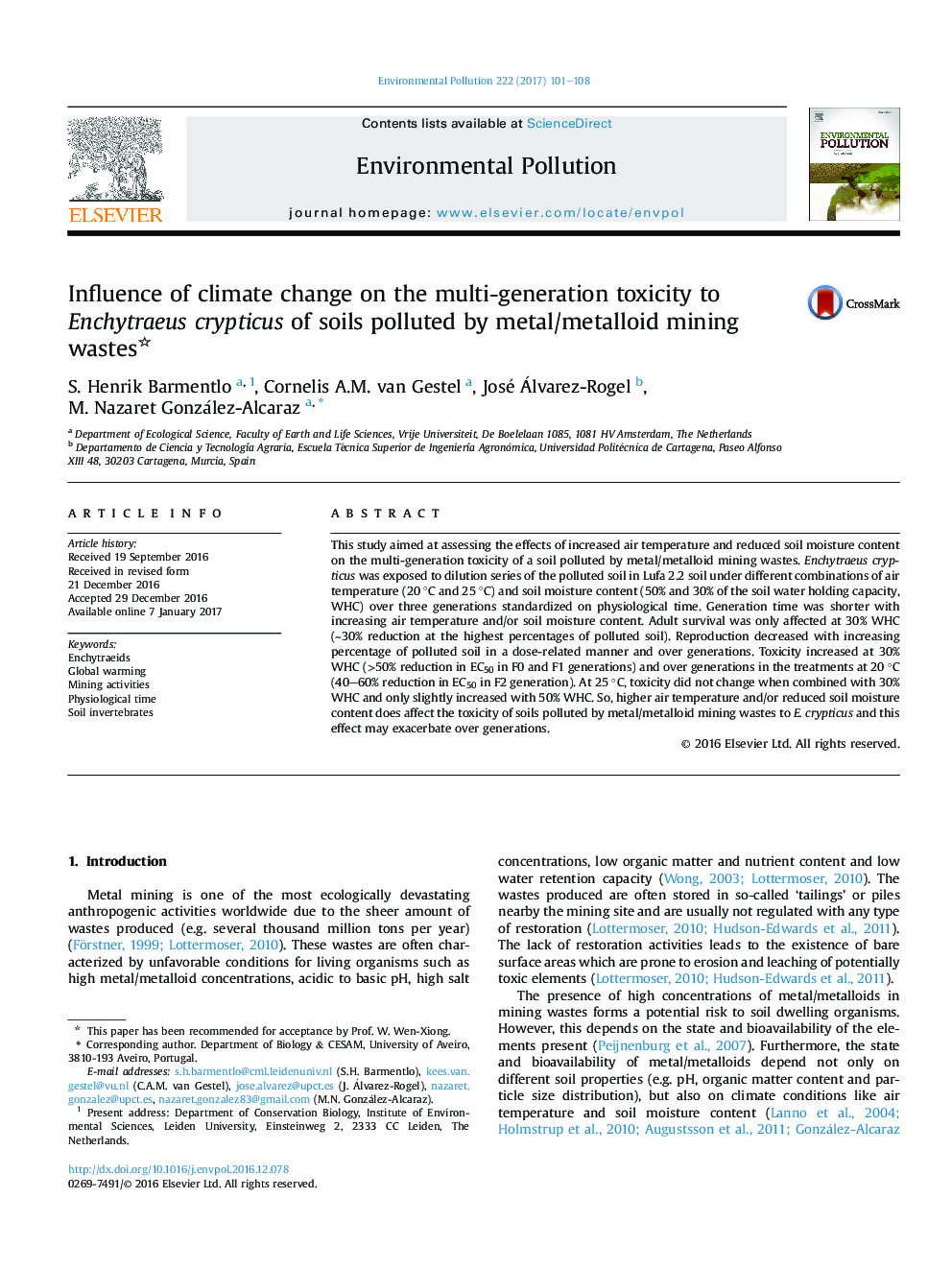| کد مقاله | کد نشریه | سال انتشار | مقاله انگلیسی | نسخه تمام متن |
|---|---|---|---|---|
| 5748999 | 1619151 | 2017 | 8 صفحه PDF | دانلود رایگان |

- Climate change simulated by higher air temperature and lower soil moisture content.
- Shorter generation time of E. crypticus at higher temperature and soil moisture.
- Soil toxicity to E. crypticus depended on pollution, climate factors and generation.
- Lower soil toxicity at 20 °C + 50% WHC but it increased over generations.
- Higher soil toxicity at 25 °C + 30% WHC but it did not increase over generations.
This study aimed at assessing the effects of increased air temperature and reduced soil moisture content on the multi-generation toxicity of a soil polluted by metal/metalloid mining wastes. Enchytraeus crypticus was exposed to dilution series of the polluted soil in Lufa 2.2 soil under different combinations of air temperature (20 °C and 25 °C) and soil moisture content (50% and 30% of the soil water holding capacity, WHC) over three generations standardized on physiological time. Generation time was shorter with increasing air temperature and/or soil moisture content. Adult survival was only affected at 30% WHC (â¼30% reduction at the highest percentages of polluted soil). Reproduction decreased with increasing percentage of polluted soil in a dose-related manner and over generations. Toxicity increased at 30% WHC (>50% reduction in EC50 in F0 and F1 generations) and over generations in the treatments at 20 °C (40-60% reduction in EC50 in F2 generation). At 25 °C, toxicity did not change when combined with 30% WHC and only slightly increased with 50% WHC. So, higher air temperature and/or reduced soil moisture content does affect the toxicity of soils polluted by metal/metalloid mining wastes to E. crypticus and this effect may exacerbate over generations.
251
Journal: Environmental Pollution - Volume 222, March 2017, Pages 101-108